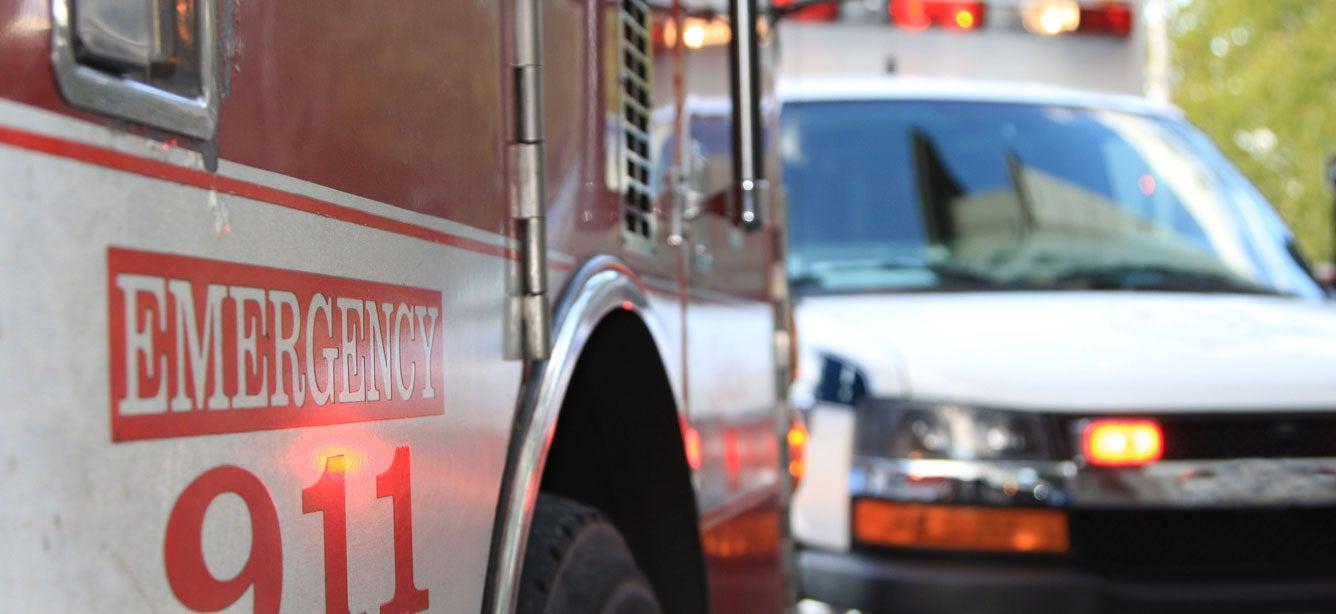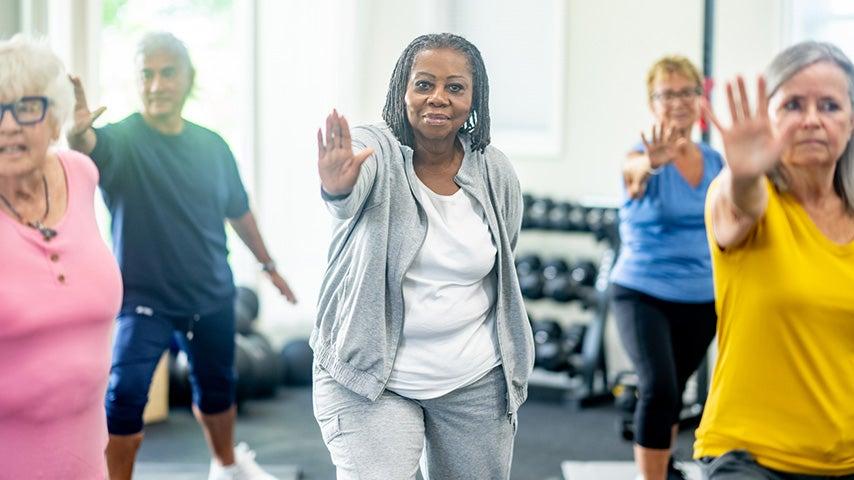Partnering with Fire and Emergency Medical Services to Prevent Falls
6 min read

Related Topics
Older adults bear a disparate burden of injury and death from falls and home fires. Risk factors such as the effects of aging, older housing and appliances, increased clutter and hoarding incidences, and the use of medications, all increase the risk of a fall and the ability to react and/or escape in the event of a fire.
What do fires and falls have in common?
Fire and emergency medical services (EMS) now see more older adult fall victims than fire victims, often being called to the same homes repeatedly for minor falls. The reliance on the fire service to respond to resident falls presents a unique opportunity for fire/EMS and aging services professionals to work together to intervene, educate, and ultimately prevent that next fall.
Did you know?
- Among people aged 65 and older, falls accounted for 17% of all 911 calls.1
- More than one in five (21%) emergency 911 calls do not result in a transport to a hospital.1
- Nearly 50% of lift-assist calls result in a second lift-assist call within two weeks.2
- Utilization of EMS services for fall-related calls has substantial financial consequences to communities and decreases the availability of EMS to respond to more urgent needs.3
When individuals utilize EMS for a fall or assistance getting up to a more mobile position but do not require transport for medical care, the response is deemed a “lift assist,” or “assist invalid” in the incident reporting data system.2,4 Lift-assist calls are associated with increased morbidity and mortality within two weeks of a lift-assist call. A lift assist call should be considered a sentinel event and serve as an opportunity for additional assessment and intervention to prevent injury, medical deterioration, and disability to older adults.5 As trusted sources of information, firefighters, and EMTs can play an important role in engaging and educating older adults on services available in the community before and after a fall.
Why partner with Fire and EMS when it comes to falls prevention?
The utilization of EMS for lift assists is costly and diverts care from higher acuity-related calls that need immediate triage and transport to care. It also presents a window into a person’s life that may not be visible to non-resident family members and health care providers. After a lift assist, if no significant intervention is offered or available, the likelihood of the next fall is imminent. A community approach in which firefighters/EMS are working in tandem with aging services and health care allow for first responders to offer resources and education to the older adult during a “teachable moment,” can reduce repeat visits for falls-related care, and allow EMS to attend to more serious fire and emergency calls.
What does partnering with firefighters/EMS look like?
There are numerous ways to work together with your local fire departments/EMS to provide a comprehensive and coordinated approach to education, prevention information, and intervention to reduce falls in your community. Here are just a few:
- Provide responders with resources to assist with recruitment and enrollment of older adults at risk for falls into community programs. EMS can also serve as a referral source for older adults to community services to address a range of issues impacting quality of life, such as social isolation, hoarding, and financial insecurity.
- As EMS often see older adults in their homes, they can provide their partners with valuable information regarding common causes of falls, emerging trends, and insights into the social and behavioral aspects of the community.
- Let your community members know that they can call their local fire department to conduct smoke alarm installation, fire escape planning, and related home assessments to support fire and fall prevention.
- Consider the National Fire Protection Association’s (NFPA) Steps to Safety™ program, which pairs fire and EMS professionals with community partners to educate older adults about home fire and fall safety through group presentations, home visits, and the creation of a local resource network.
Five tips for engaging your local fire departments/EMS providers in your falls prevention strategy
- Work with your local fire department to use available community data to determine the call frequency for falls and lift assists. Data will allow you to assess the frequency and locations of falls-related calls in your community to guide your falls prevention efforts and activities.
- Learn about the connection between fire and falls. Better understand how these two hazards go hand in hand and the importance of EMS presence and engagement. Learn more about fire and life safety education at nfpa.org/education.
- Contact your local fire prevention bureau or fire marshal’s office. Schedule a meeting to introduce your organization and share the statistics you’ve found to foster an impactful community partnership.
- Identify areas for collaboration. Explore current fire and falls strategies that are in place and expand on those ideas for immediate change.
- Stay in touch. Be a collaborative leader and involve local EMS contacts in your falls prevention discussions.
Sources
1. Faul M, Stevens JA, Sasser SM, et al. Older Adult Falls Seen by Emergency Medical Service Providers: A Prevention Opportunity. Am J Prev Med. 2016;50(6):719-726. doi:10.1016/j.amepre.2015.12.011
2. Cone DC, Ahern J, Lee CH, et al. A descriptive study of the "lift-assist" call. Prehosp Emerg Care. 2013 Jan-Mar; 17(1):51-6.
3. Quatman CE, Mondor M, Halweg J, Switzer JA. Ten years of EMS Fall Calls in a Community: An Opportunity for Injury Prevention Strategies. Geriatr Orthop Surg Rehabil. 2018;9. doi:10.1177/2151459318783453
4. Leggatt L, Van Aarsen K, Columbus M, et al. Morbidity and Mortality Associated with Prehospital "Lift-assist" Calls. Prehosp Emerg Care. 2017 Sep-Oct; 21(5):556-562.
5. Snooks HA, Anthony R, Chatters R, et al. Paramedic assessment of older adults after falls, including community care referral pathway: cluster randomized trial. Ann Emerg Med. 2017;70(4):495–505.e28.


